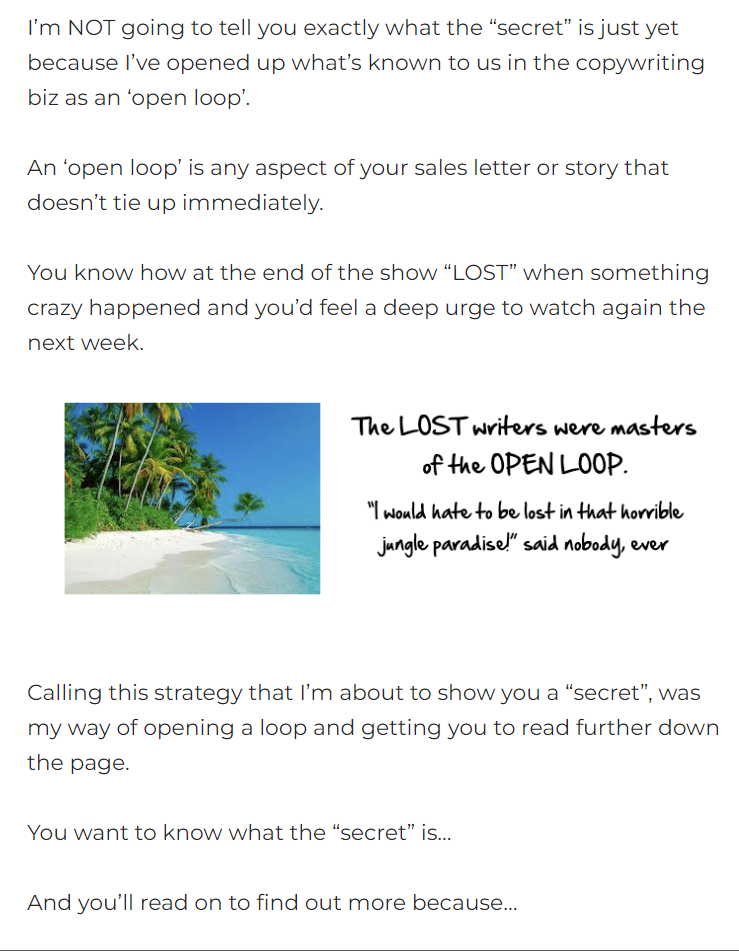4 Easy and Powerful Copywriting Techniques to Boost Your Copy
I come bearing gifts from my copywriters' bag of tricks.
Four easy but powerful techniques to implement next time you write copy:
- Even If
- Battlefield
- Open loop
- CPTS
Let's see how they work and how to use them.
Even if
"Even if” is perfect to overcome your prospect's objections. The common “It sounds good, but it wouldn’t work for me” can be addressed with this technique.
It connects two phrases:
- The desirable outcome, benefit, or result.
- The objection or anxiety that keeps people from believing they can get that outcome, benefit, or result.
Use it on headlines, subheads, bullet points, or at any point in your copy that you see fit.


Battlefield
Also known as "in media res" or “in the midst of things.”
This technique lands your reader right in the middle of the action to capture his attention immediately.
It sacrifices the build-up and cuts all the fluff.

Open loop technique
The open loop, also known as the curiosity gap, consists of telling people enough to pique their curiosity and leave them itching to close the loop.
To close the gap they have to keep reading your copy.
The goal is to capture the readers' attention and motivate them to take the next step.
Where to use it: on headlines, subheadlines, bullet points, ads, body copy (to keep people reading), email subject lines, and email copy (to drive people to a landing page, for example).

An open loop entices curiosity and stimulates the need to know more. There are different ways to do it. You can introduce something new that your reader's previous experience can't explain. Or start a story and pause at a climatic moment delaying the end. You can also withhold information for a period of time or introduce an idea and connect it with an unexpected outcome.
For long-form sales pages and emails, don't give the answer away too soon. You want people to keep reading as long as possible.
For emails, use an open loop in your subject line and close it in the body copy. Then you set up a second open loop in the email itself and close it on your landing page.
To create an open loop, determine what your prospects want most. Then hold back a critical piece of information until later in your messaging. See the example below.

CPTS
CPTS stands for Color Pattern Texture and Shine.
This one comes from Clinton Kelly and Stacy London, former hosts of What Not to Wear and it was adapted to copywriting by Joanna Wiebe from CopyHackers.
Make your copy more interesting, eye-catching, and attractive by adding visual quality to the sentences.
Color. Incorporate color into the story you tell.
For example, you could say "Save a little green" instead of "Save money."
Pattern. Mix your sentence lengths to add a pattern.
Combine short sentences with long ones. For example, two short sentences, one long sentence, two more short sentences, and then a long one.
Texture. Add texture using punctuation, capitalization, symbols (like & or + signs), parentheses, numerals, emojis, asterisks, ellipses (...), and dashes.
For example, replace "and" with +, capitalize a noun for no reason, use extra-long ellipses, or use ellipses at the front of a sentence.
Shine. Add shine by using onomatopoeia (words like boom, whoosh, meh), rhyming, or alliteration.


